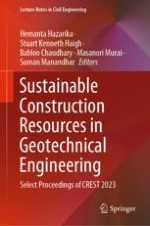2024 | OriginalPaper | Buchkapitel
Geotechnical and Leaching Characteristics of the Indian Raw Phosphogypsum
verfasst von : Yatesh Thakur, Akanksha Tyagi, Sudipta Sarkar
Erschienen in: Sustainable Construction Resources in Geotechnical Engineering
Verlag: Springer Nature Singapore
Aktivieren Sie unsere intelligente Suche, um passende Fachinhalte oder Patente zu finden.
Wählen Sie Textabschnitte aus um mit Künstlicher Intelligenz passenden Patente zu finden. powered by
Markieren Sie Textabschnitte, um KI-gestützt weitere passende Inhalte zu finden. powered by
